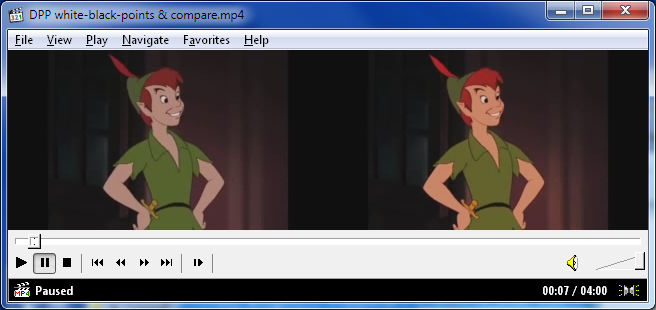

You may decided to comment out the cropped parameter line in your script, which might work, but make sure the If you happen to have a video file with a width that is not divisible by four, you'll getĪn error from VirtualDub while trying to load the script, complaining about this arithmetic thingie: Through several iterations of tweaking the framerate up and down. This will help you produce output video as you expect, without having to go Setting the right framerate also helps create theīest output, without guessing. as to how you do that exactly, we will see in a short while:

If you get this one wrong for some reason, you'll get this error when you try to load the script in VirtualDub In general terms, MPEG-4 with XviD should work

Now, forget this last sentence.Īnyhow, for more information what formats support YV12, AviSynth FAQ is your friend. Which is ideal for image processing techniques. Meaning that for each image, the luma data for all pixels is stored consecutively, followed by the chroma data, In geeky terms that should impress you, YV12 is a planar format, How do you know what this YV12 thingie is? Or why do you need it? The answer is, you do not need really need You can edit this line if your file is already in the right format - or use Second, there's the instruction toĬonvert source to YV12 format. You will need to point to your mvtools.dll and the source file correctly. However, a few pointers, which demand your attention: Source=AVISource("Path to source.avi",false)īackward_vec=source.MVAnalyse(isb=true,truemotion=true,pel=2,idx=1)įorward_vec=source.MVAnalyse(isb=false,truemotion=true,pel=2,idx=1)Ĭropped=source.crop(4,4,-4,-4) # by half of block size 8īackward_vec2=cropped.MVAnalyse(isb=true,truemotion=true,pel=2,idx=2)įorward_vec2=cropped.MVAnalyse(isb=false,truemotion=true,pel=2,idx=2)įSource=source.MVFlowFps2(backward_vec,forward_vec,īackward_vec2,forward_vec2,num=250,idx=1,idx2=2) Here's my work, basically identical to the above example: Just remember, AviSynth is a de-facto programming language Through the commands and explaining them one by one.

The author explains in detail what the script does, so there's little point going I found the slow-motion script over at Nerds Central andĪdapted it to my own use.
#Avisynth assumefps code
NO expert, but I can read code and google my way around. Open a text editor and start writing commands - or find ready scripts on the Web and copy them over.I am Still, you need not be afraid of the command No frontend (GUI), no fancy or easy way of getting thins done. This is done, you are ready to use AviSynth. But weĪlso need an extra plugin called mvtools that is not available with the basic package. Oooh, sounds scary, but worry not, I'll make it simple.ĪviSynth, installation, preparation, configurationīefore we start using VirtualDub, we need to configure AviSynth. It has no frontend, which means you will have to settle down for command-line and scripts. This program is a powerful utility for video And we'll get to know another handsome program called AviSynth.
#Avisynth assumefps how to
And today, I will show you how to create slow No worries, we've overcome that obstacle in the last tutorial. That just does that requires certain formats and sizes?
#Avisynth assumefps software
Happens if you have a very special need, like say creating bullet-time slow-motion videos, and the software Apart from the purely aesthetic needĪnd maybe a desire to make your output media smaller, resizing videos might not seem that important. We have learned just a few weeks ago how to use What I got back was quite close to looking like silent film but it looked too sped up IMO.All right. So this should be like old film that captured 12fps of information but was being played back through a modern 24fps projector. Next I took that back into Virtualdub and told it to play the 12fps at 24fps (So 12 frames per 0.5 seconds). It just looked really jerky and unpleasant. What I got back was footage playing at the same speed but with every other frame removed. That characteristic jumpy motion when people are moving around, that has a certain charm to it.Īssuming that a silent film was shot at 12fps, I loaded my test 24fps AVI in VirtualDub. I'm only talking about approximating the speed at which silent footage appears. Setting aside: making it B&W, added grain, scratches, tints and a black halo round the image etc. I have a silent film project in mind and I was wondering/experimenting with how to make 24fps (Aprox) Blu-Ray footage look truly like film shot in the silent era.


 0 kommentar(er)
0 kommentar(er)
